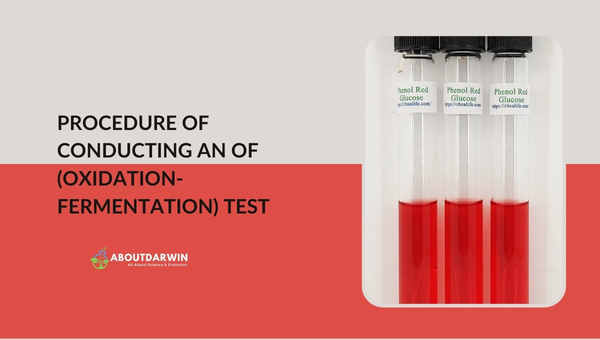Physical Address
304 North Cardinal St.
Dorchester Center, MA 02124
In the world of microbiology, differentiating between bacteria that oxidize or ferment carbohydrates proves crucial. This critical distinction is made possible by the Oxidation-Fermentation (OF Test). A relatively simple, yet highly efficient procedure, the test offers invaluable insights into unseen microbial activities.
The essence of the OF Test lies not merely in its application but also in understanding its principle, nuances involved in its procedure, real-world uses and interpretation of results it garners. This article will delve into these aspects while simplifying these seemingly complex concepts to a level any layman can comprehend and appreciate.
Contents
When it comes to recognizing the metabolic activities of different microorganisms, The Oxidation-Fermentation (OF) Test plays a significant role. Its core principle revolves around identifying whether bacteria can metabolize a specific carbohydrate by oxidation or fermentation processes.
In simple words, the test is designed to tell us if the bacteria use oxygen (oxidizers) while metabolizing sugars or can work without it (fermenters). It’s ingenious in its simplicity and exceptionally revealing in its results, making it invaluable for microbiologists worldwide.
Now let’s shift our focus to what’s in an OF test? What materials and elements make this critical differentiation possible?
Primarily, we are looking at two main components:
Together, these constituents create a saturated semi-solid medium where bacterial activity unfolds under controlled settings. Depending on whether glucose is oxidized or fermented, color changes are observed thus offering answers about bacterial behavior laid out right before your eyes, courtesy of a well-executed OF test.
Also Read: Unveiling MacConkey Agar: Composition, Principles, and Uses

Also Read: Cetrimide Agar: Uncover Its Composition, Principle, and More
One of the most compelling aspects of the OF Test is its wide range of practical applications, primarily for the characterization and identification of bacteria.
This test is a sterling method for differentiating between oxidative bacteria (those that produce acid from carbohydrates in the presence of oxygen) and fermentative bacteria (those that produce acid under both aerobic and anaerobic conditions).
Medical microbiology heavily relies on this test to differentiate among Gram-negative bacilli, especially within Enterobacteriaceae family. For instance, it can be used to distinguish between Pseudomonas aeruginosa (oxidative) and Escherichia coli (fermentation).
Sure, Here’s an example of how positive and negative results may be represented using a markdown table:

| Condition | Green Color (Slant/Butt) | Yellow Color (Slant/Butt) |
|---|---|---|
| Oxidative Bacterium: | Positive Result (Acid Production) / Negative Result (No Acid Production) | Negative Result / Negative Result |
| Fermentative Bacterium: | Negative Result / Positive Result | Positive Result / Positive Result |
| Nonreactive or Slow-Oxidizer Bacteria: | Negative result/Negative result | Negative result/Negative result |
Keep in mind that this is a simple description, actual interpretations can vary based on factors like incubation conditions, kind of organism etc.
Also Read: Acid-Fast Stain Revealed: Unveiling Microbial Secrets
Fermentation takes place in a cell’s cytoplasm, not in mitochondria.
Fermentation happens in anaerobic conditions (i.e.,without oxygen).
The main idea behind the OF Test is to differentiate bacteria based on whether they oxidize or ferment carbohydrates.
A simple rule of thumb- yellow color indicates acid production from carbohydrate utilization.
While many can, it’s primarily used for differentiating among Gram-negative, rod-shaped bacteria especially within Enterobacteriaceae family.
Suffice it to say that the OF (Oxidation-Fermentation) Test stands as an invaluable tool in microbiology. It offers us a glimpse into the fascinating world of bacteria, helping distinguish between different species based on their metabolic capabilities – an often critical factor in pathogenicity, adaptation, and survival.
From diagnostic applications to microbial ecology research, they increasingly find use across various areas. Simplifying complex microbial interactions and offering key insights into unseen activities, the significance of OF Test continues to grow with each scientific stride we make toward understanding our microscopic cohabitants better.